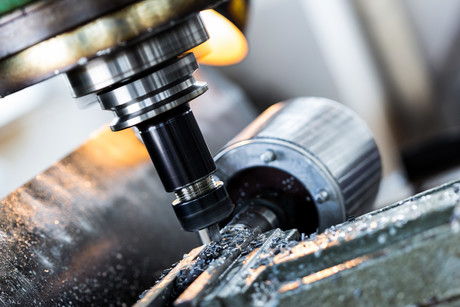New ISO standards developed for greener machine tools

Machine tools may not be the first thing that springs to mind when the topic of energy efficiency comes up, but they do contain motor and auxiliary components whose energy demand varies widely during machining operations. Now, a new series of ISO standards can help measure energy supplied and improve machine design and performance.
Machine tools use different forms of energy, such as electrical energy, compressed air, hydraulic energy, energy hidden in the cooling and lubrication system, etc. The energy demand of a machine tool is thus considered as key data for investment, but does not stand alone; the performance of a machine tool is multidimensional regarding its economic value, its technical specification and its operating requirements, which are influenced by the specific application. As natural resources become scarce, environmental performance criteria for machine tools need to be defined and the use of these criteria specified.
ISO has now published the first two parts of a new International Standard for the environmental evaluation of machine tools, which proposes to analyse machine tools with regard to the delivered functions in order to highlight the commonalities in the huge variety of existing machine tool types.
ISO 14955-1, Machine tools – Environmental evaluation of machine tools – Part 1: Design methodology for energy-efficient machine tools addresses the energy efficiency of machine tools during their working life. It identifies the main functions and machine tool components that are responsible for energy demand during the use phase. These components are then compared with previous components or with the state-of-the-art for their future improvement.
ISO 14955-2, Machine tools – Environmental evaluation of machine tools – Part 2: Methods for measuring energy supplied to machine tools and machine tool components supports the energy-saving design methodology according to ISO 14955-1 by providing practical methods for measuring the energy supplied to machine tools.
The standards were developed by ISO technical committee ISO/TC 39, Machine tools. Ralf Reines, the convenor of the working group that oversaw their development, said, “This is, to my knowledge, the only standard concerning this topic that is tailored for machine tools.
“It covers the topic in a way that it can be applied to each and every machine tool, despite the fact that the product group of machine tools is extremely diverse, eg, different technologies (such as milling, turning, grinding, laser processing, forming), processing of material (metal, wood, plastics), sizes (to produce parts the size of a tooth or to process gears for windmills of 10 m in diameter).”
The launch of the ISO 14955 series means energy efficiency is likely to become an increasingly important quality attribute of modern machine tools. The standards can be purchased from Standards Australia or through the ISO Store.
Berrima Cement Works upgrades with sustainable tech
Boral has unveiled new carbon-reducing technology at the site, which supplies 40% of cement in...
Australian orgs partner to speed circular economy
GS1 Australia has joined forces with the Product Stewardship Centre of Excellence to drive the...
Victorian utility recognised at Asian Water Awards
South East Water won two awards for its Hydrotrak Geofencing technology, which has helped it to...









